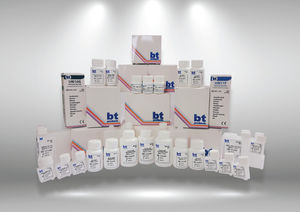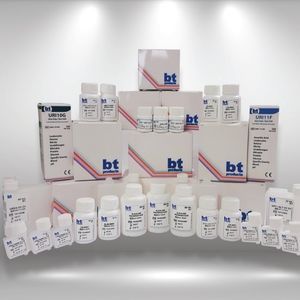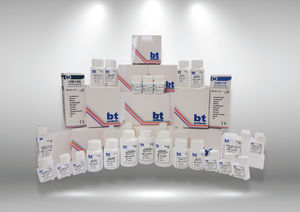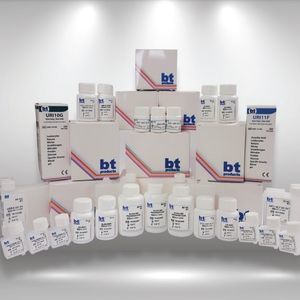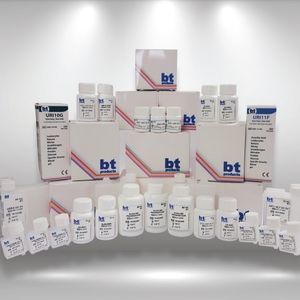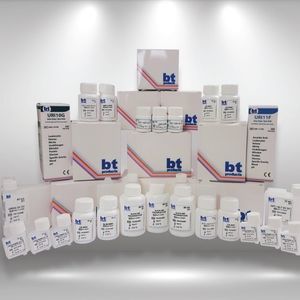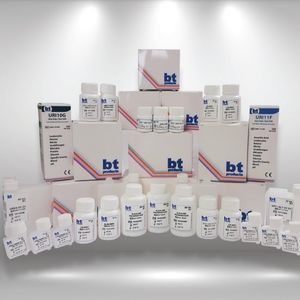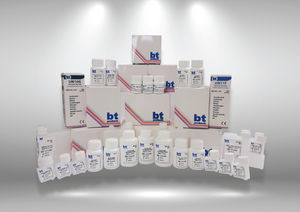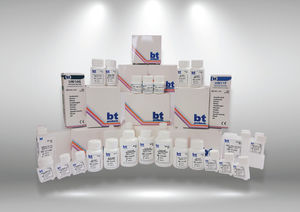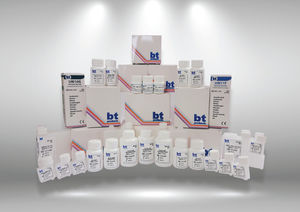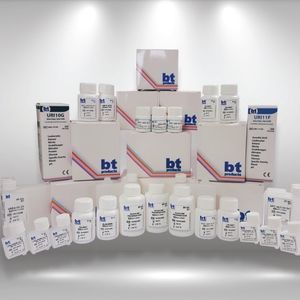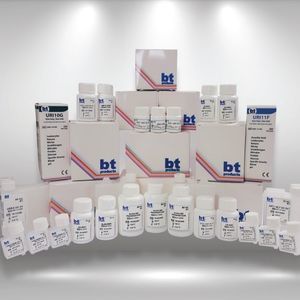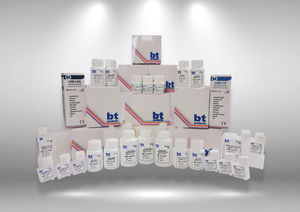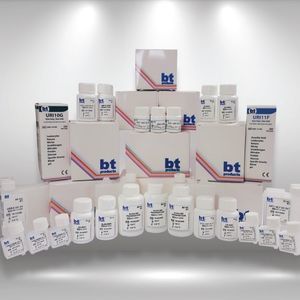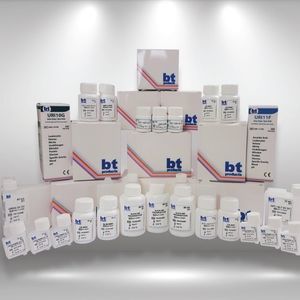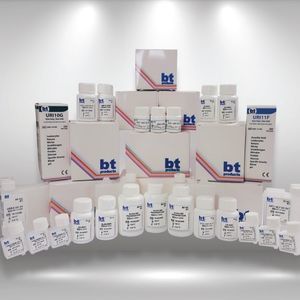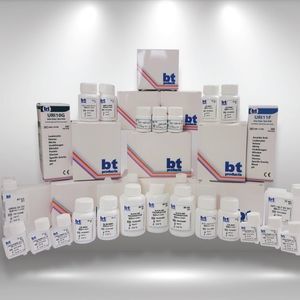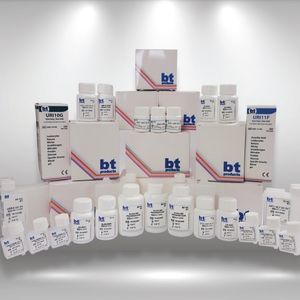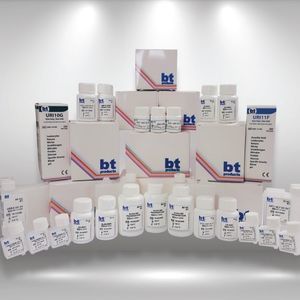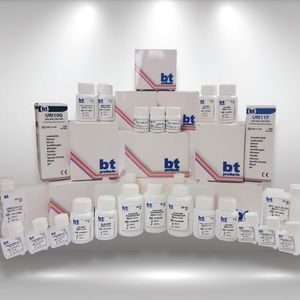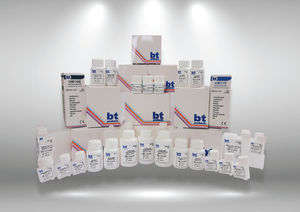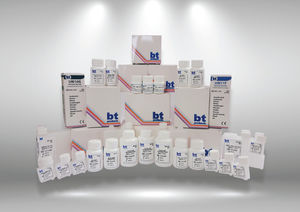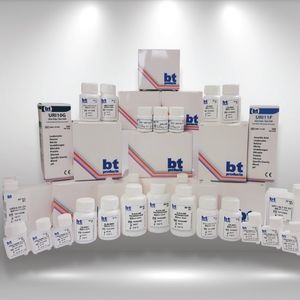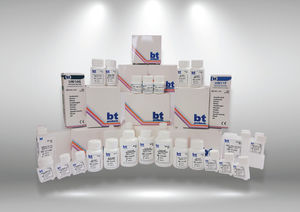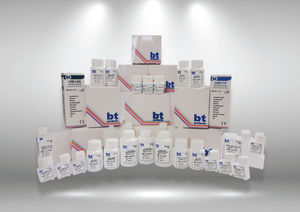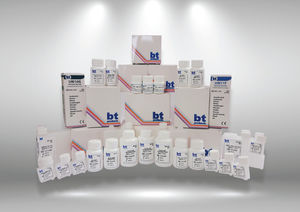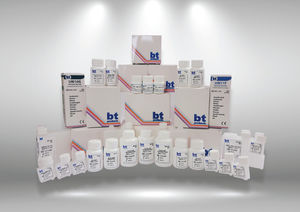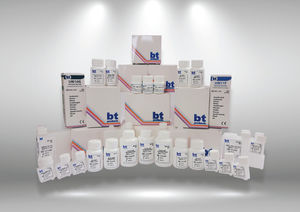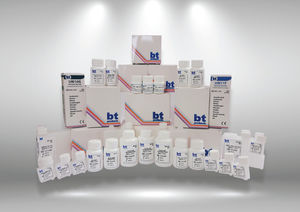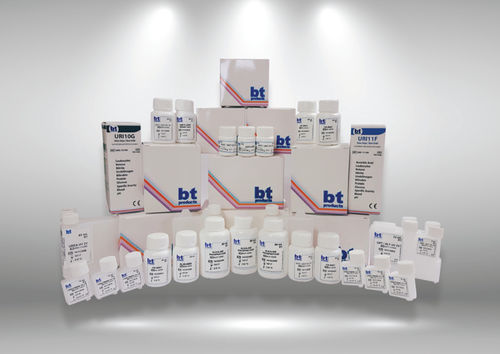
- Laboratory
- Laboratory medicine
- Solution reagent
- BILIMSEL TIBBI ÜRÜNLER
Potassium reagent kit POT-10 seriessolutiondiagnosticlaboratory
Add to favorites
Compare this product
Characteristics
- Type
- solution
- Applications
- diagnostic, laboratory, for biochemistry
- Tested parameter
- hemoglobin, potassium, ascorbic acid, bilirubin, triglycerides, lactate, lithium, lead, copper
- Storage temperature
Min.: 2 °C
(36 °F)Max.: 8 °C
(46 °F)
Description
For the quantitative determination of Potassium in human serum and plasma.
METHODOLOGY
Potassium is determined spectrophotometrically through a kinetic coupling assay system using potassium dependent pyruvate kinase. Pyruvate generated is converted to lactate accompanying conversion of NADH analog to NAD analog. The corresponding decrease of optical density at 380nm is proportional to the potassium concentration in the serum.
Precautions:
1. This reagent is for in vitro diagnostic use only.
2. DO NOT INGEST. Avoid contact with skin and eyes.
3. These reagents contain lithium azide. Azide compounds may react with lead or copper plumbing to form potentially explosive compounds. Flush drains with co
REAGENT DETERIORATION
Do not use the reagent if:
1. Presence of particles and turbidity.
SPECIMEN COLLECTION AND STORAGE
For use non-hemolysed serum .
Stability: Serum samples should be collected such that testing is performed as soon as possible and within 5 days after the specimen collection.
NTERFERANCES
The assay is not interfered by the following substances at indicated concentrations: Na+ 150 mM, NH4 + 0,5 mM, Ca2+7,5 mM, Pi 2.0 mM, ascorbic acid 10,0 mM, Zn2+0.5 mM, Fe3+ 0.5 mM, Cu2+ 0.5 mM, triglycerides 1000 mg/dL, hemoglobin 500 mg/dL, conjugated bilirubin 20 mg/dL and unconjugated bilirubin 15 mg/dL
Materials Required but not Provided
1. Spectrophotometer or colorimeter measuring at 380-405 nm.
2. Matched cuvettes 1.0 cm light path.
3. General laboratory equipment.
PROCEDURE
Wavelength : 380 nm
Assay Type : Fixed time
Reaction Direction : Decreasing
Temperature : 37°C
Opthical path : 1 cm
Catalogs
No catalogs are available for this product.
See all of BILIMSEL TIBBI ÜRÜNLER‘s catalogsOther BILIMSEL TIBBI ÜRÜNLER products
Universal Bottled Clinical Chemistry Reagents
Related Searches
- Solution reagent kit
- Protein reagent kit
- Diagnostic reagent kit
- Laboratory reagent kit
- Enzyme reagent kit
- Histology reagent kit
- Dye reagent
- Antibody
- Buffer solution reagent kit
- Clinical chemistry reagent
- Quality control reagent kit
- Clinical chemistry analyzer
- Clinical reagent kit
- Virus reagent kit
- Automatic clinical chemistry analyzer
- Benchtop clinical chemistry analyzer
- Test strip
- Tissue reagent kit
- Electrolyte reagent kit
- Colorimetric reagent kit
*Prices are pre-tax. They exclude delivery charges and customs duties and do not include additional charges for installation or activation options. Prices are indicative only and may vary by country, with changes to the cost of raw materials and exchange rates.



